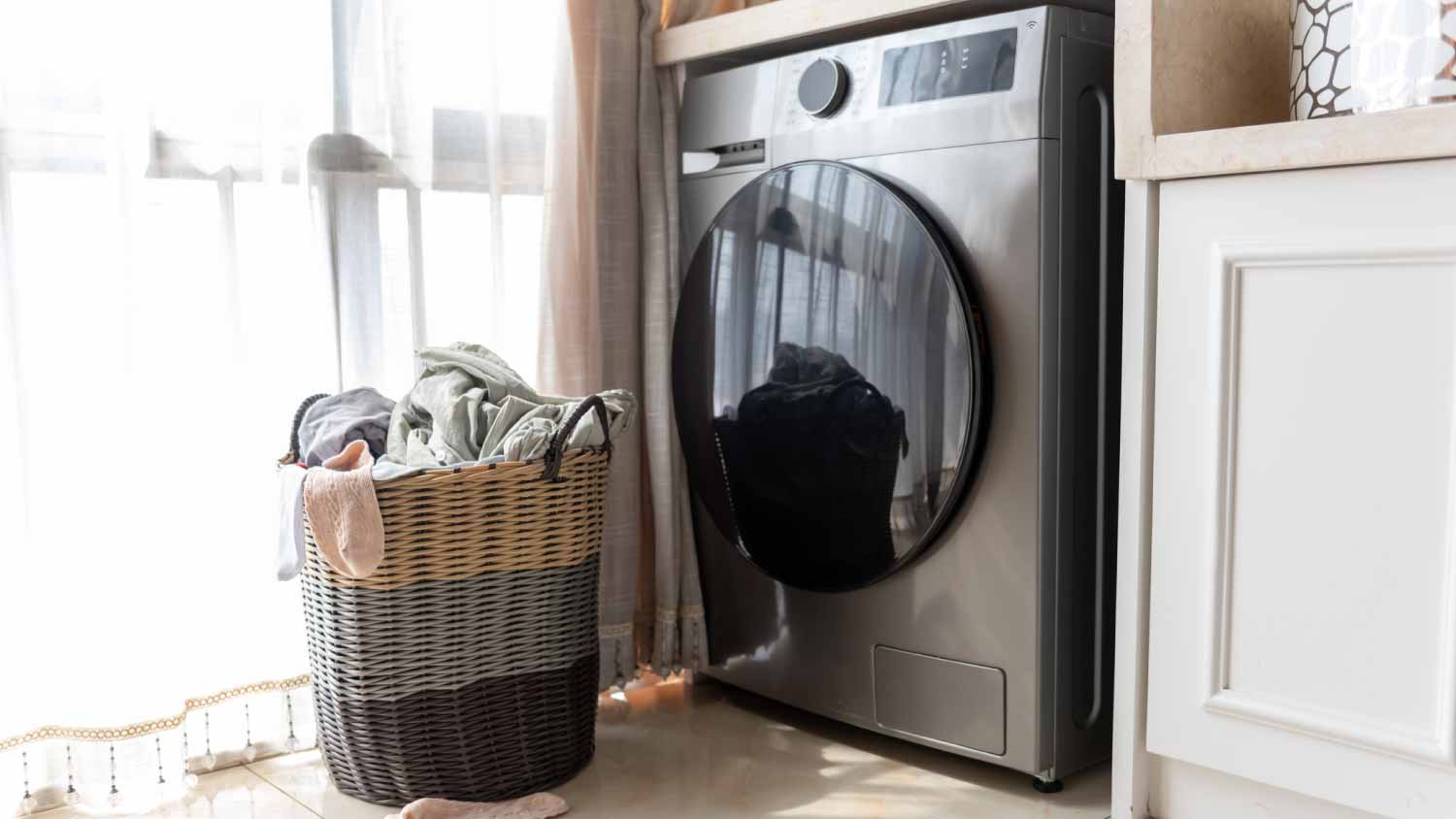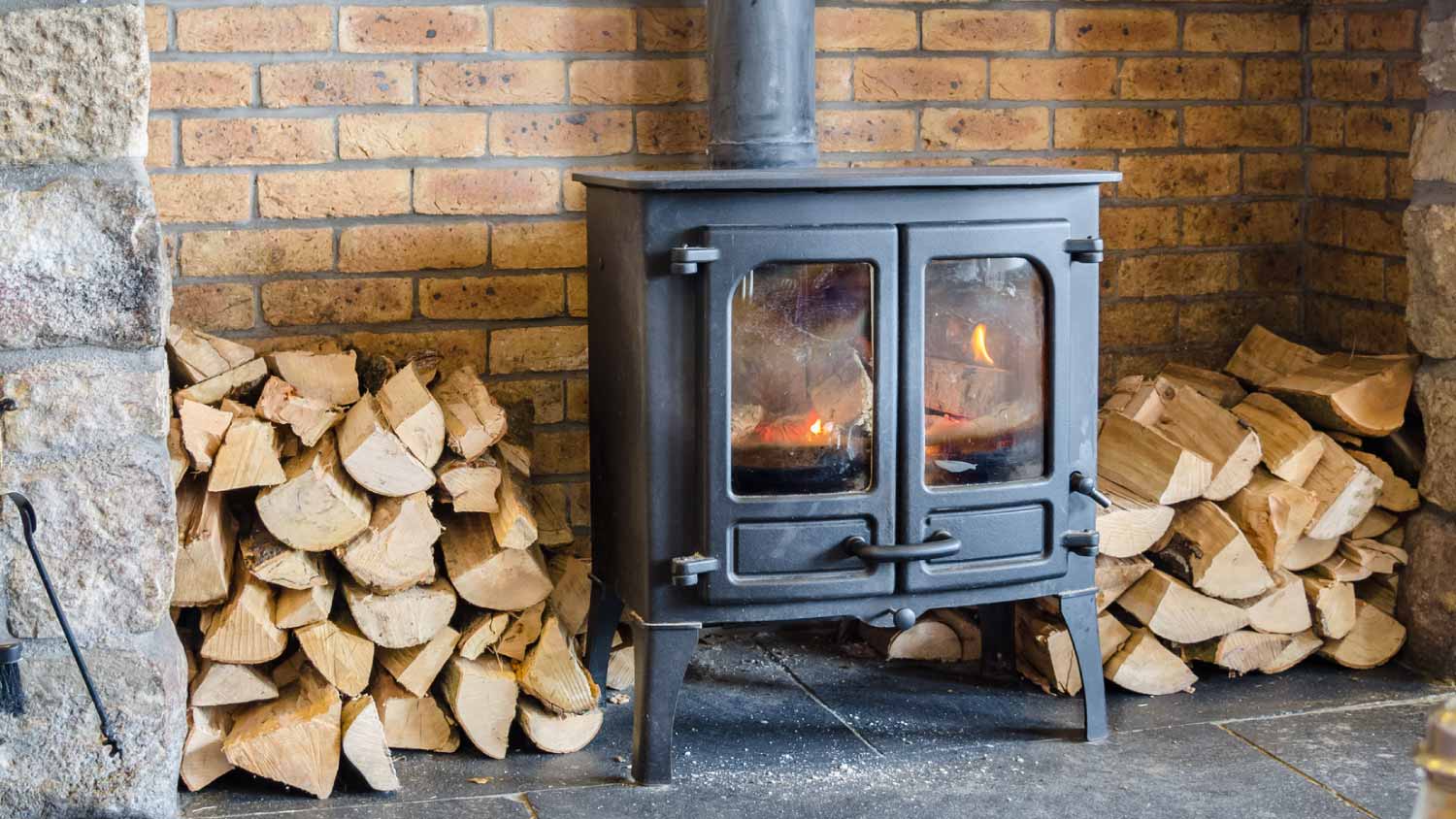6 Common Washer and Dryer Parts That Might Need Repair
Get repairs handled fast by knowing what's likely to break first


Your washer and dryer make handling the contents of that forgotten gym bag and other major messes a breeze. Luckily for you, manufacturers design washers and dryers to last a long time. But the key to that long life is identifying small problems before they become big ones. Here are the parts of your washer and dryer most likely to give you grief.
1. Motor
When the motor inside your washer or dryer overheats, it will temporarily shut down. There’s a strong likelihood that once the motor cools, it will start working again—but that doesn’t necessarily solve your problems. If your motor overheats once, it’s likely to overheat again. You will want to contact a local washer repair professional to give it a look, and most of them will tell you that the overheated motor is a sign that your motor is going bad.
If that’s the case, you can simply replace it. Most washing machines alternate directions during cleaning cycles. If you have a bad motor, the machine may only run in one direction. The cost of installing a new motor for your washer or dryer runs between $150 and $250.
2. Coupler
But sometimes, your motor doesn’t break bad all by itself; for every Walter White, there must be a Jesse Pinkman. And, in the case of a washer or a dryer, that’s the coupler. The coupler is made of plastic or rubber and connects the motor to the transmission. Sometimes, couplers break, and when this happens, it affects the way the motor runs. In this case, replacing the coupler should solve the problem.
The cost of installing a new coupler usually comes in between $80 and $100.
3. Water Pump
Your washer’s water pump moves the water around inside the machine to help drain it all out at the end of a cycle. There are a few different things that can go wrong with your pump.
Break
Water pumps are made of rubber or plastic—and these materials won’t last forever. It’s common for them to break. It costs between $300 and $400 to replace a broken water pump in your washer.
Clog
If your water gets a clog, it makes it impossible for it to do its job of moving water in and out of your dryer. Opening the access panel allows you to remove clogs at the front bottom of most units, where you can easily see and (carefully) remove them by hand.
Bad Seal
If your pump develops a bad seal, it will drip a small amount of water down through the base of your unit. You won’t notice at first, but all that water adds up. You can repair bad seals by replacing the pump or tightening the bolts that keep the pump in place.
Belt Issue
Belts operate many washer water pumps, and when those belts fail, it can lead to water pump failure.
4. Belts
Both washers and dryers have belts to help them operate. If a belt isn’t working, it needs to be repaired quickly.
Washer belts
Your washer has a tub inside it, and the washer belt moves the tub around during a wash cycle. Pulleys keep the belt in place, and when the tub stops moving, that means the washer’s belt has worked its way out of those pulleys. It will still clean clothes, but not as well.
Dryer belts
Plain and simple, when your dryer belt stops working, your clothes won’t dry. Don’t let your washer’s noises fool you; it may still sound like it’s working, but your clothes won’t dry inside of it until you replace the belt.
It costs between $180 and $275 to replace a washer belt, and it costs about $200 to replace your dryer belt.

5. Gaskets
Gaskets play a critical role in both washers and dryers. In one, they keep the heat inside. In the other, the water. When they fail, they need immediate attention.
Washer gaskets
You guessed it: washer gaskets make sure that the water inside of your washer stays inside your washer. When they stop working, water leaks out of the machine. It costs between $230 and $300 to repair your washer’s gaskets.
Dryer gaskets
If your dyer’s gaskets aren’t working properly, your clothes just won’t dry effectively. It costs between $150 and $200 to repair your dryer’s gaskets.
6. Heating element
Your dryer produces heating via an igniter or a heating element. When it breaks, you get soggy clothes. Electric dryers usually have a heating element, and gas dryers have an ignitor. If either stops working, you must repair it before your machine can operate correctly.
Another heating component that could give you grief is the thermal fuse. It’s responsible for making sure the dryer doesn’t get too hot. If you notice your clothes are too hot or even burned, your thermal fuse could be to blame. Do not use your machine until repaired.
A thermal fuse in a dryer prevents the machine from getting too hot or working at all. If you notice the dryer overheating or burning your clothes, stop using the machine and call an experienced repair person. If left untreated, a bad thermal fuse can even lead to a fire.
It costs between $170 and $280 to have the heating elements in your dryer repaired by a professional in your area.



.jpg?impolicy=leadImage)

- Appliance Repair Companies
- Washing Machine Repair
- Dryer Repair
- Refrigerator Repair
- Dishwasher Repair
- Oven Repair
- Wood & Pellet Stove Repair
- Freezer Repair Services
- Wood Stove Services
- Gas Stove Repair
- Emergency Appliance Repair Companies
- Ice Maker Repair
- Gas Appliance Repair
- GE Appliance Repair
- GE Refrigerator Repair
- GE Dryer Repair
- GE Dishwasher Repair
- GE Washing Machine Repair
- Samsung Appliance Repair
- Samsung Refrigerator Repair
- Samsung Dryer Repair
- Samsung Washer Repair
- Samsung Dishwasher Repair
- Samsung Oven Repair
- Whirlpool Repair
- Whirlpool Refrigerator Repair
- Whirlpool Washer Repair
- Whirlpool Dryer Repair
- Whirlpool Oven Repair
- Maytag Appliance Repair
- Maytag Refrigerator Repair
- Maytag Washer Repair
- Maytag Dryer Repair
- Maytag Dishwasher Repair
- Kitchenaid Appliance Repair
- Kitchenaid Oven Repair
- Kitchenaid Refrigerator Repair
- Kenmore Appliance Repair
- Kenmore Dishwasher Repair
- Kenmore Washer Repair
- Kenmore Dryer Repair
- LG Refrigerator Repair
- Bosch Appliance Repair
- Kenmore Refrigerator Repair
- LG Appliance Repair Services
- GE Microwave Repair
- Electrolux Appliance Repair
- Electrolux Washer Repair
- Kitchenaid Dishwasher Repair Services
- Wood Stove Inspection
- Dishwasher Installation
- Trash Compactor Repair














